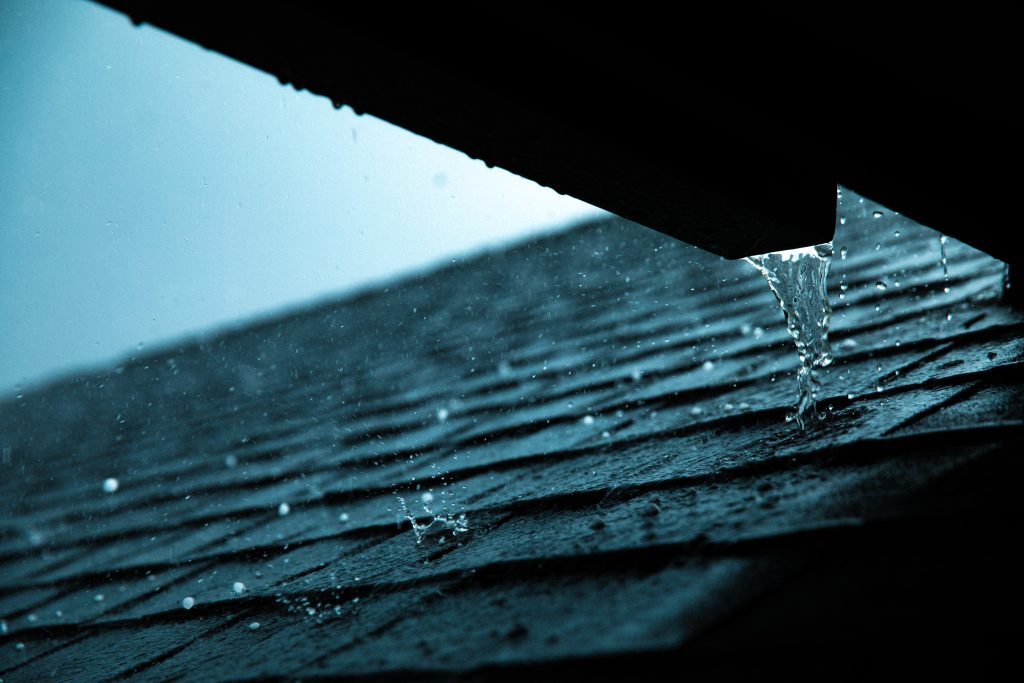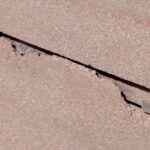
Natural disasters such as storms, hail, and hurricanes can cause significant damage to roofs and properties. In such situations, storm damage roof repair becomes essential to restore your home’s first line of defense to its best condition.
Maintaining the integrity of your roof, especially after a damaging storm, entails a lot of advantages in the long run. In this guide, I’ll introduce to you the importance of timely repair, hiring a professional contractor, how to assess the extent of roof damage, when a full roofing replacement might be necessary and more.
A Guide to Storm Damage Roof Repair
The aftermath of a severe storm can leave your property in disarray, and your roof is often the most affected parts of your home. Identifying the severity of roof damages, understanding the consequences, and knowing when to call a contractor for storm damage repairs are crucial steps in addressing the issue.
Reliable Storm Damage Roof Repair Services in Centennial, Colorado
Storms can cause a variety of damages to your roofing, including granule loss, bruising, cracked roof tiles, dislodged shingles, and damaged gutters. The extent of the damage is influenced by the storm’s intensity. After a storm, it’s critical to determine the extent of damage and take action to prevent further damage.
Storm damage roof repair is the process of restoring your roofing to its pre-storm condition. Although these types of repairs can at times be out of budget and time-consuming, it is necessary to maintain roof stability and structural soundness and guarantee the security of the people living there.
Types of Storm Damage
From heavy winds to hail, storms can cause significant damage that compromises the integrity and functionality of a roof. Understanding the types of storm damage that can occur is crucial for homeowners and property owners to identify and address issues promptly. The most common types of storm damage are:
- Wind Damage: Strong winds can cause significant damage to roofs, gutters, and windows. Wind damage can lead to leaks, missing shingles, and broken windows, which can allow water to seep into the property.
- Water Damage: Heavy rain and floods can cause water damage to homes and properties. Mold development, structural damage, and health risks are all possible outcomes of water damage. To stop further damage, water-related issues must be addressed as soon as possible.
- Hail Damage: Hailstorms can cause significant damage to roofs, windows, and siding. Hail damage can lead to leaks, dents, and cracks in the property’s exterior.
- Tree Damage: Fallen trees or branches can cause severe damage to homes and properties. Tree damage can cause roof damage, broken windows, and structural damage.
Identifying the Severity of Roof Damages
Assessing the extent of roof damage after a storm can help homeowners determine whether they should call for professional roof storm damage repairs or attempt temporary repairs themselves. Here are some key factors to consider when evaluating the severity of roof damages:
- Size and Density (In Case of Hailstorms)
Hailstorms can cause severe damage to your roof, particularly if the hailstones are large and dense. The size and velocity of hailstones can displace shingles, tear synthetic membranes, and create significant damage to any roofing material.
- Ponding (for Flat-Roofed Homes)
Heavy and prolonged rainstorms can cause uneven areas on flat-roofed homes to accumulate water, forming ponds. If left unaddressed, these ponds can cause stress on synthetic materials, leading to tearing and leaks. Additionally, ponded water on metal roofs can cause rusting and subsequent leaks.
- Missing Shingles
Strong winds and hailstorms can displace shingles or remove granules from their surfaces. A lengthy storm with high winds or hail may result in numerous missing or damaged shingles, which can cause leaks and further damage to your home. Missing shingles is a common problem when it comes to roof storm damage.
- Bruising
Hailstorms can create bruises on any type of roofing material. These bruises feel like soft areas on fruit skins and can indicate areas of damage. If you notice any part of your roof material feeling softer than the rest, mark these areas with chalk to identify them more easily.
- Cracking
Cracks in roofing materials can be a result of heavy-hitting hailstones or strong winds. If you see any cracks on shingles, asphalt, metal, or tar and gravel roofs, temporary repairs may be necessary until a professional contractor can evaluate the damage.
Consequences of Roof Damages
Many homeowners may opt for temporary storm damage repair due to its affordability and short-term effectiveness. However, a roof that has sustained significant damage during a storm may not perform well during subsequent storms. Some potential consequences of unresolved roof damage include:
- Weakened Durability: Storms can weaken the durability of your roof by causing bruises and cracks. A roof that has been compromised may be more susceptible to structural damage and severe leaks during future storms.
- Shortened Roof Lifespan: A damaged roof may have a significantly shortened lifespan. Asphalt shingles, rubber roofs, and other materials may lose 30-50% of their estimated service life without permanent repairs, resulting in 5-10 years less protection for your home.
- Expensive Repair Costs: Delaying storm damage repair can lead to more significant problems and higher repair costs. Timely repair can minimize damage and reduce repair costs.
What to Do if your Roof Has Storm Damage
Roof damage is one of the most common types of storm damage. Here are the steps to follow for if your roof has been damaged by harsh storms:
- Inspection: Inspect the roof for damage. Look for missing shingles, dents, and cracks.
- Temporary Repair: Perform temporary repairs until a professional contractor can fix the roof. Cover the damaged area with a tarp to prevent leaks.
- Hire a Professional Contractor: Hire a professional contractor to perform the storm damage roof repair. The contractor will inspect the roof and determine the extent of the damage.
- Roof Replacement: If the damage is severe, the contractor will recommend a roof replacement. The contractor will remove the damaged roof and install a new roof.
Temporary Storm Damage Repair Solutions
While it’s essential to address damage promptly, homeowners can implement temporary repair solutions until a professional contractor can assess the situation. However, permanent professional storm damage roof repair or replacement should be pursued as soon as possible to prevent further damage and extend the life of your roof.
Temporary Shingle Repairs
Homeowners can perform spot repairs on damaged or missing shingles by replacing them with durable replacement materials. This temporary solution can help seal leaks and prevent further damage until a professional contractor can perform proper repairs.
Water Displacement
Using a hand or motor-driven siphon, homeowners can remove excess water that has accumulated on flat roofs or in clogged drains and gutters. Addressing ponding water promptly can prevent significant damage to your roof due to the weight of the water.
Sealing and Boarding Leaks
Wooden planks sealed with exterior tarpaulin can help improve your home’s insulation if the storm has created openings through crawlspaces or other areas. This temporary solution can also prevent small animals from entering your home and reduce the likelihood of moisture accumulation.
When a Full Roofing Replacement is Necessary
While some storms may cause minimal damage, others can leave your roof severely compromised. In these cases, a professional contractor may recommend a complete roofing replacement as the best storm damage roof repair option. This investment can protect your home from future storms and add value to your property. A full roofing replacement is necessary for several situations:
- Extensive Damage
- Aging Roof
- Structural Issues
- Upgrading Roofing Material
It is recommended to consult with a professional roofing contractor who can assess the condition of the roof and provide expert advice on whether a total replacement is necessary based on specific circumstances.
Hiring a Professional Storm Damage Roof Repair Contractor
Repairing storm damage is a challenging task that calls for specialized knowledge. To guarantee that the repair is completed accurately and safely, it is imperative to contact a skilled contractor. Here are some pointers for choosing a qualified storm damage restoration specialist:
- Research: Research potential contractors and check their reviews and ratings. Ask for referrals from friends and family.
- Licensing and Insurance: Make sure the contractor is licensed and insured. This will protect you from liability in case of accidents during the repair process.
- Written Estimate: Before the repair work starts, ask the contractor for a documented estimate. This will guarantee there are no unforeseen expenses.
- Warranty: Request a warranty on the contractor’s work. This will guarantee that any problems that develop following the repair process are covered.
Protecting your Home: Storm Damage Roof Repair
Storm damage roof repair is essential for maintaining the integrity and value of your home. Identifying the severity of roof damages, understanding the consequences of unresolved damage, and knowing when to call a contractor are crucial steps in addressing the issue. Timely storm damage roof repair or replacements can save homeowners from more costly and extensive repairs in the long run.
If you need reliable and expert roofing repair contractors for both commercial and residential properties, Bjorn’s Roofing is here to help. We provide FREE roof inspections in Centennial, Colorado, and the surrounding Denver Metro area.
Latest Posts
Related: storm damage roof repair, roof damage due to storm, roof damage repair, roof damage from hail, roof storm damage checklist, roof damage assessment, roof storm damage, storm damage to a roof, roof storm damage repair, hailstorm damage repair, roof damage from storm, what to do if your roof blown off



